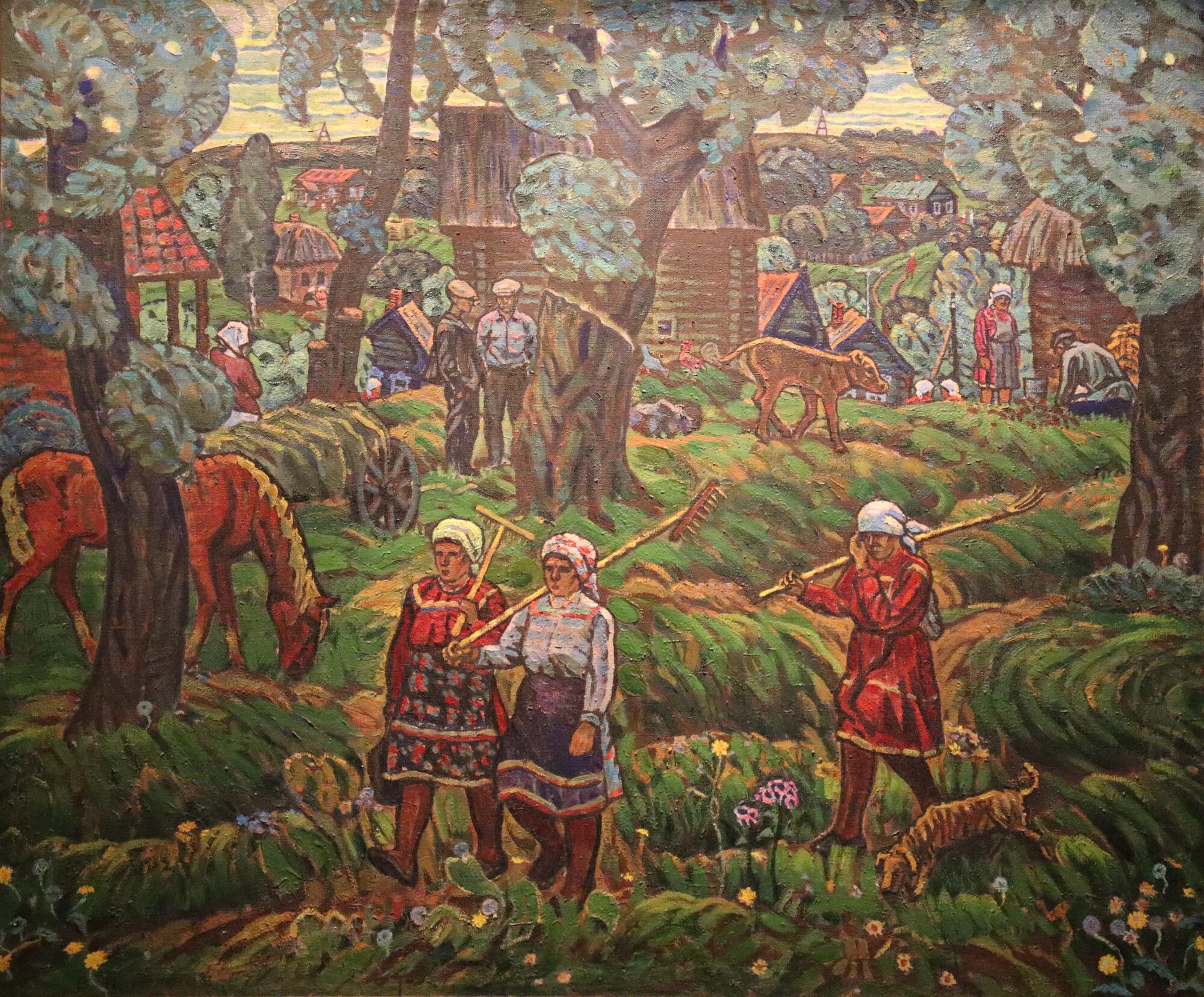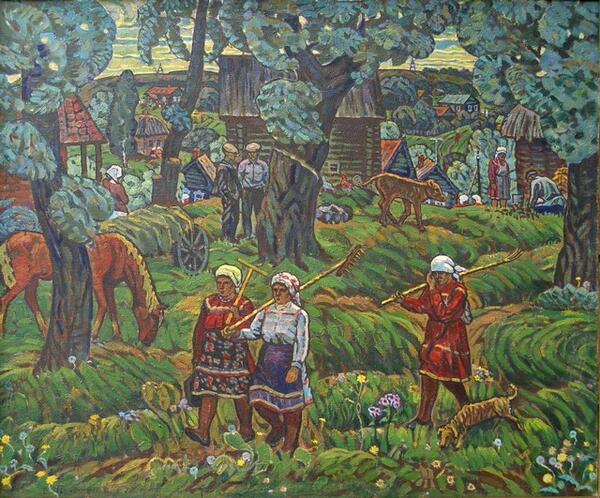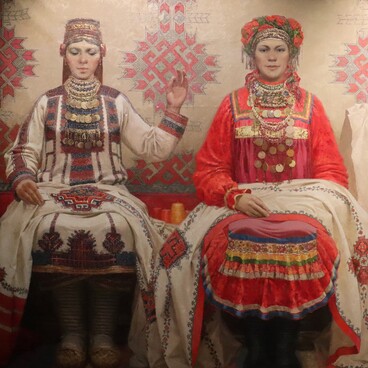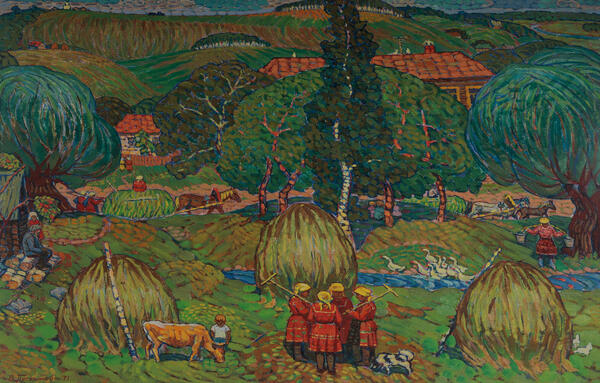Soviet painting of the 1970s continued to follow the logic of the previous decade. Artists sought to capture socially significant subjects on their canvases: they depicted village life, workers and collective farmers — the builders of the new state. At the same time, in the 1970s, the mood of the canvases became more contemplative, filled with personal thoughts of their creators. The familiar theme of land and labor was presented in a new light in the work of Viktor Ivanovich Petryashov, a People’s Artist of the Republic of Mordovia.
Viktor Petryashov was born in 1942 in the village of Lemdyaysky Maidan in the Staroshaygovsky District of Mordovia. After his family moved to Saransk, the boy entered a children’s art studio. After graduating from Cheboksary Art School in 1964, the artist returned to work in his native region. His works are well-known and housed in many museums in Russia.
The artist works in various genres, those include thematic painting, landscape, still life, and portrait. Although Petryashov addressed many subjects, the theme of rural life was his favorite. Landscapes of the native land and scenes of labor became pivotal in his work.
The painting “Village” conveys the harmony of rural labor. The canvas presents a summer day, dense greenery of trees frames houses, lush flowery meadows. In the foreground, we can see three Mordovian women dressed in Moksha costumes with rakes. Behind them, villagers go about their daily business, a horse grazes, and a calf runs around.
Viktor Petryashov chooses a high horizon line, thereby leaving more space for the image of everyday rural life. Thanks to this compositional technique, the image looks more attainable to the viewer, it becomes easier to see significant details and feel the atmosphere of the canvas.
The painting “Village” is distinguished by its emphasized decorative nature, a juicy color palette, and a multilayered composition. The artist condenses the pictorial space of the canvas and sculpts it with thick brush strokes, as if with plasticine, turning the all-encompassing display of the Mordovian village into a small cozy world seen through the eyes of a particular person.
Viktor Petryashov was born in 1942 in the village of Lemdyaysky Maidan in the Staroshaygovsky District of Mordovia. After his family moved to Saransk, the boy entered a children’s art studio. After graduating from Cheboksary Art School in 1964, the artist returned to work in his native region. His works are well-known and housed in many museums in Russia.
The artist works in various genres, those include thematic painting, landscape, still life, and portrait. Although Petryashov addressed many subjects, the theme of rural life was his favorite. Landscapes of the native land and scenes of labor became pivotal in his work.
The painting “Village” conveys the harmony of rural labor. The canvas presents a summer day, dense greenery of trees frames houses, lush flowery meadows. In the foreground, we can see three Mordovian women dressed in Moksha costumes with rakes. Behind them, villagers go about their daily business, a horse grazes, and a calf runs around.
Viktor Petryashov chooses a high horizon line, thereby leaving more space for the image of everyday rural life. Thanks to this compositional technique, the image looks more attainable to the viewer, it becomes easier to see significant details and feel the atmosphere of the canvas.
The painting “Village” is distinguished by its emphasized decorative nature, a juicy color palette, and a multilayered composition. The artist condenses the pictorial space of the canvas and sculpts it with thick brush strokes, as if with plasticine, turning the all-encompassing display of the Mordovian village into a small cozy world seen through the eyes of a particular person.





